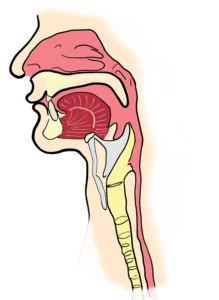The ability to sing in tune is critical for singers. All the styles and artistry in the world are of little help if you struggle to sing the correct pitch.
Key takeaways:
You are either flat or sharp when you’re out of tune.
Constant practice and finding the right balance between air, vocal cords, and vowels will help you sing better and in tune.
You’ll be more in tune if you sing within your vocal range.
Free Vocal WarmupsScientifically Proven to Work Fast!
Before I started learning to sing, I thought that I would never be able to match pitch. Most of my early attempts wandered woefully astray. Even though my ears could hear I was wrong, I seemed able to do little to match my voice with what I heard (or thought I heard).
The good news is you can develop and improve your intonation and pitch accuracy to learn how to sing on pitch.
To learn why singers might sing out of tune, here we will first understand what pitch is and how we create it. And then, we will discuss finding exercises and vocal practices to help develop pitch control.
What Is Pitch?
Sound is vibrating air, and music (verses noise) has vibrations at specific and regular intervals.
When you sing a note, there is a number of times per second the air molecules will vibrate back and forth. This is also called “frequency.”
When you sing the A above middle C (also known as A440), your vocal cords will open and close 440 times per second. This makes the air vibrate at 440 times per second, which is why this note is referred to as “A440.”
Here is an orchestra tuning to an A440:
If the other instruments play an A440 but your vocal folds open and close at 435 times per second, you will be below the desired note and sound out of tune.
We need the frequency of our vocal folds to match (or complement) the music.
How do experienced singers do this?
Take Online Courses for Singers
Singing In and Out of Tune
When you are out of tune, you will be either flat or sharp. This refers to which side of the musical pitch you are on – too low or too high when singing musical notes.
“Sharp pitch” refers to being above the desired target note; you are singing a little too high.
When you are singing a “flat pitch,” it means you are a little below the target note.
You can further break this down into “cents.” For tuning accuracy, a half-step on a piano (a note and its closest neighbor) is divided into 100 cents. These are very tiny increments.
This means you can be 50 cents flat or a few cents flat. The first is very out of tune, while the singer who is just a few cents flat is very close.
The better you get at singing in tune, the more precise your adjustments will be, moving just a few cents here and there.
Let’s experiment with singing flat and sharp.
Play a comfortable isolated note on the piano and sing the target note as closely as you are able.
Now while playing the note, move your voice a little higher or just above the note you hear from the piano.
You will now be singing sharp. (Above the reference note)
Bring your voice back in tune with the piano.
Now let your voice dip just below the target pitch.
You are now singing flat. (Below the reference note)
Holding a note and moving up or down and then bringing the note in tune is also a good way to sharpen your ear and intonation skills.
The Three Main Reasons
As a vocal coach and teacher trainer, I have taught hundreds of voice instructors in my Contemporary Voice Teacher Academy, and one of the first things I do in my course is break down the singing technique into three main elements:
AirVocal Cords (or simply “cords)Vowel
The little trinity of “Air-Cords-Vowel” or ” ACV” is the foundation of singing.
If you are finding it hard singing notes on pitch, one or more of these elements is likely out of balance. Here are some common tuning issues:
Reason #1: Air
Breath control, or the speed of airflow through the cords (or vocal folds), will affect the pitch.
Not enough air can cause the vocal folds to be over-muscled and a bit too thick. This can make a singer go flat or below the correct pitch.
Conversely, a faster airflow rate can cause the pitch to rise, going above the correct pitch and sounding sharp.
You can experience this by making a pitch and then pushing your hand on your belly in a pulsing fashion. The pitch will rise with each push.
On higher notes, the air won’t raise the pitch quite as noticeably, but it can still be enough to push you sharp or above the intended pitch. This vocal tone is particularly grating on the listener’s ears.
Learning to control the airflow rate to the vocal folds with breathing techniques and breathing exercises can greatly sing better and sing in tune. Even starting with the correct posture will create proper alignment for correct breathing and an optimal position for singing.
Reason # 2: Vocal Cords
Pre-Phonatory Tuning
Ummm…what?
Pre-phonatory tuning is a fancy way of saying you need to adjust your own voice to the pitch or music before making a sound.
Pre: BeforePhonatory: Phonation or making soundTuning: Adjustment for pitch
All great singers mentally create each pitch before singing it. They may not be completely conscious of the event, but they mentally and physically make the adjustments in the microseconds before singing the note.
If we attempt to sing without first adjusting the vocal folds, we will likely sing an incorrect pitch.
Just as guitar players will fret a chord before strumming their stringed instruments, we need the skill to set pitch before making a sound.
The pitch-making process is incredibly fascinating. Our vocal folds have tiny muscles we cannot see or feel and have almost no conscious awareness of, yet we can be incredibly precise in adjusting them. These larynx muscles are found in the larynx, commonly known as the voice box.
Science is still not sure how we do this.
But do it we can.
By practicing both the mental and physical adjustments of your vocal folds before singing, you can use simple steps to increase your pitch control, tune notes and improve your singing voice quickly.
Try this simple exercise:
Go to a keyboard and play a note that is a comfortable pitch for your voice type (not too low or high). Listen carefully to the note, and now recreate it in your mind’s ear. Finally, hear that note being played mentally.
Now mentally hear yourself singing the note. Once that is strongly rooted in your mind, now go ahead and sing it with a straight tone.
You should find that you have landed squarely or very close to the pitch.
Repeat this on random notes for five to10 minutes, twice a day. Within a couple of weeks, with just a little bit of extra practice, you should be able to match pitch with much more accuracy. Adding the Solfege Scale to your practice schedule is also a good exercise to start to recognize and match notes.
On a side note: You do not need “perfect pitch,” which is the ability to name any note you hear (a C or a G, etc.). You will be developing intonation, or the ability to tune your voice to a specific pitch in singing.
Reason #3: Wrong Vowels
As you increase the vocal range of notes you are singing, correct vowel adjustments become critical.
There are different ways to sing vowels; you will want to adjust depending on where you are singing in your range.
Your voice has a lower and upper register, usually called chest and head voice. If you try and stay in chest voice on a high pitch that should be in head voice, you will begin to widen and yell the vowel.
This will cause stress on your cords and will usually pull your voice below the pitch, or “flat,” often more than a few cents. Most out-of-tune singers are pulling their chest voice too high (yelling) and going flat.
Vowels have a direct influence on your ability to sing throughout your range and also when going from head to chest voice.
Try this experiment:
Call out the word “HEY” like you are trying to get someone’s attention from across the street. Notice how high your voice goes.Now give an excited “WHOO-HOO” like you are cheering at a sporting event.Did your voice go higher?
In fact, you will be able to take the “whoo-hoo” much higher than the shouted “hey.”
This is because the different vowels help put us in chest register or head voice.
If you attempt to sing a higher note on a very wide, shouty vowel like AH, you will likely use too much muscle at the vocal cords and go flat as you go into this vocal register.
Learning to balance resonance with vowels is an important part of great singing, especially when learning to sing notes with power. You will notice legendary singers like Mariah Carey are able to sing from their lowest note to their highest note with balanced healthy singing, and they can add power without strain.
Note: A key skill in singing is learning to blend or “mix” your chest and head registers. This mixed voice will allow you to sing through your vocal range with less strain.
Learn to make correct vowel adjustments, and you will smoothly transition into your head voice on the high notes with greater vocal control. This will make singing in tune much easier.
Let’s look at a few other tips to help your vocal control.
Practice Singing In Your Vocal Range
Take a glance at your favorite singers’ discographies, and you’ll notice that most songs exist within a certain range, with the higher and lower notes being saved for the extremes. This is because a singer’s vocal range is the measure of the highest and lowest notes they can sing, and knowing your natural range is an important part of being a successful vocalist.
These issues of vocal imbalance often occur when a singer is attempting music outside of their comfortable range.
By “comfortable,” I mean where there is sufficient coordination and technique to sing the correct note in tune without yelling or falling apart.
It is important to know the range of a song before attempting to sing it. If there are notes outside of your comfortable range, the chances of you not singing the song in tune are much higher.
When in a practice session, it is a good idea to look over the sheet music for a piece of music and mark where the high and low notes are. This is the range of the song.
The reason singers will study proper vocal technique and practice consistently is to improve and extend their vocal balance so they can maintain proper airflow, vocal cord adjustment, and vowel tuning throughout their repertoire of songs.
Initially, when practicing singing, it is easier to work your pitch singing exercises on lower notes or chest voice range. However, once you have established proper balance in this area, you should match pitch more easily and accurately.
Singing Technique
One way to control your voice and vocal tone is to practice vocal exercises. These exercises should be done daily so that you can improve your vocal control, range, strength, and, yes, pitch accuracy.
The tiny muscles that control pitch require consistent work to respond to the demands of the music. Vocal exercises allow you to pinpoint and work on specific areas of your vocal instrument so that you can sing with confidence and in tune!
Set aside time for vocal training with sheet music each day. Just ten minutes of regular practice and focused attention on intonation can improve your ear for music and develop enjoyable, comfortable singing.
Over time, and especially with daily consistent practice, your exercises will build correct muscle memory, making singing easier with more control.
There is a wide range of vocal exercises, singing scales, and methods available. The key is to find a routine that you enjoy and can stick with to develop your vocal technique.
My book, Beginning Singing, has exercises to help you gain control of your voice and has bonus online video lessons.
Private lessons or online lessons with a qualified voice coach can also help you with healthy singing and support you on your journey to becoming an accomplished singer.
Am I Tone Deaf?
As a closing point, I want to address tone-deafness or amusia.
True tone deafness is rather rare, affecting around four percent of the population. Moreover, a number of these cases are a result of brain damage rather than a biological condition.
There are online tests for tone deafness and other pitch discrimination abilities.
I have found those who struggle to sing notes in tune are more likely “tone-shy” rather than tone deaf, and incorporating daily ear training exercises of mentally creating and then matching a note can help in most cases.
There have also been good results utilizing a tone differentiation trainer.
This pitch recognition training will refine your musical ear and the ability to hear subtle pitch shifts and identify when there is a wrong note.
Sing…A Lot
You get better at singing by…singing. So the more you listen and work on matching pitch, the deeper you will make these connections of pitch perception in your brain.
Studies have found children match pitch more accurately when doubling a human voice versus a piano. In addition, joining a choir or singing with friends will increase your abilities.
If you are serious about your craft, getting regular singing lessons with a singing voice specialist is highly recommended! And with today’s technology, online singing lessons are a great option.
With thoughtful practice and musical training, you will no longer be intimated by leaps in pitch and will soon be singing in tune!
To learn more about my books, courses, and John Henny’s VoiceSchool.com, please visit johnhenny.com. And if you are interested in online vocal lessons, you can reach out to our front desk at [email protected], and we would be happy to answer your questions.








